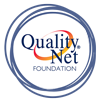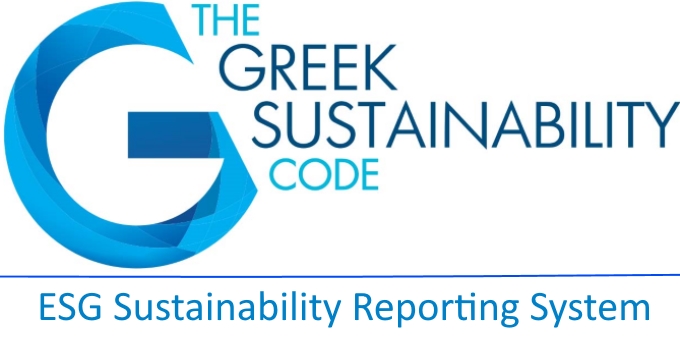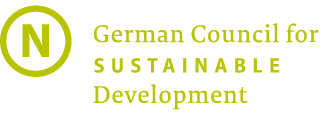LEVEL C
The following table has all the information for selected LEVEL C
PILLAR: PROCEDURES
5. Responsibility
CRITERIA DESCRIPTION
TOPICS
Organization’s accountability level in the corporate management and the involvement of the administration with regard to Sustainable Development & Corporate Responsibility is disclosed.
- Who has ultimate responsibility for sustainable development & corporate responsibility in the Organization.
- How this responsibility is operationalized in the Organization (e.g. with a department, with a designated executive or a control team).
INDICATORS
GRI
Not appicable
Not appicable
EFFAS
Not applicable
Not applicable
PILLAR: ENVIRONMENT
12. Resource Management
CRITERIA DESCRIPTION
TOPICS
The Organization discloses what qualitative and quantitative goals it has set itself with regard to its resource and energy efficiency, its use of renewables, the increase in raw material productivity and the reduction in the usage of ecosystem services, and how these goals have been met or will be met in the future.
- What goals the Organization has set for the environmental aspects of its operation.
- Whether and how the organization achieves these goals.
INDICATORS
EFFAS
E04-01:
Total Waste in tonnes.
E05-01:
Percentage of total waste which is recycled.
E01-01:
Total energy consumption.
E04-01:
Total Waste in tonnes.
E05-01:
Percentage of total waste which is recycled.
E01-01:
Total energy consumption.
PILLAR: SOCIETY
14. Employment Rights
CRITERIA DESCRIPTION
TOPICS
The Organization reports on how it complies with the employment rights of both nationally and internationally recognized standards and how it promotes employee involvement in Sustainable Development & Corporate Sustainability Management.
- Policies and procedures with regards to human resources
- What the Organization does, even beyond the legal requirements, to integrate employees in shaping their work environment (e.g. through employee satisfaction research survey, participation in internal committees etc).
- Which international rules the Organization follows (if the Organization is international) with regards to human resources.
INDICATORS
EFFAS
S03-01:
Age structure/distribution (number of FTEs per age group, 10-year intervals).
S10-02:
Percentage of female FTEs in senior positions in relation to total FTEs in senior positions.
S03-01:
Age structure/distribution (number of FTEs per age group, 10-year intervals).
S10-02:
Percentage of female FTEs in senior positions in relation to total FTEs in senior positions.
15. Equal Opportunities
CRITERIA DESCRIPTION
TOPICS
The Organization discloses in what way it has implemented national and international processes/principles and what goals it has set to promote equal opportunities and diversity, occupational health and safety, the integration of migrants and people with disabilities, fair pay as well as a work-life balance.
- Whether the Organization pays all its employees appropriately.
- What the Organization does to avoid discrimination of any kind.
- Whether there are programmes in the Organization that promote health and education as well as the work-life balance of its employees.
INDICATORS
GRI
SRS 403-2:
Type of injury and rates of injury, occupational diseases, lost days and absenteeism, and total number of work-related fatalities.
SRS 403-4:
Health and safety topics covered in formal agreements with trade unions.
SRS 404-1:
Average hours of training per year per employee.
SRS 406-1:
Incidents of discrimination and corrective actions taken.
SRS 403-2:
Type of injury and rates of injury, occupational diseases, lost days and absenteeism, and total number of work-related fatalities.
SRS 403-4:
Health and safety topics covered in formal agreements with trade unions.
SRS 404-1:
Average hours of training per year per employee.
SRS 406-1:
Incidents of discrimination and corrective actions taken.
EFFAS
S10-01:
Percentage of female employees in relation to total employees.
S10-02:
Percentage of female FTEs in senior positions in relation to total FTEs in senior positions.
S02-02:
Average expenses on training per FTE per annum.
S10-01:
Percentage of female employees in relation to total employees.
S10-02:
Percentage of female FTEs in senior positions in relation to total FTEs in senior positions.
S02-02:
Average expenses on training per FTE per annum.
18. Corporate Citizenship
CRITERIA DESCRIPTION
TOPICS
The Organization discloses how it contributes to corporate citizenship in the regions in which it conducts its activity (the criterion refers to the Organization’s commitment that overcomes the boundaries of its direct operation with regard to Sustainable Development & Corporate Responsibility and covers issues of sponsorships, donations and employees’ volunteering).
- Whether and how the Organization is involved in social, environmental and cultural projects/programmes in the community and / or the region (e.g. donations, support from staff in the context of corporate volunteering or group efforts; this could range from a simple indication of funded projects and organizations to a description of the involvement).
INDICATORS
EFFAS
Not applicable
Not applicable






